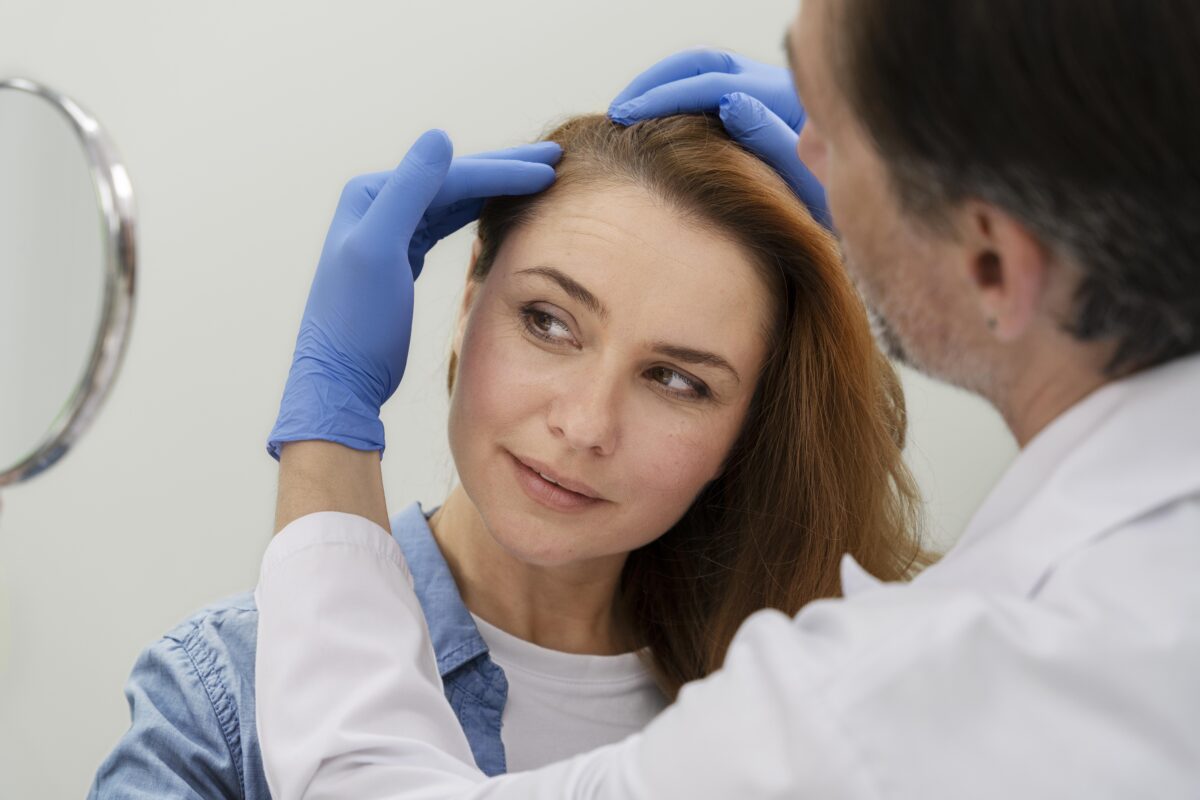Hormone Replacement Therapy for Female Hair Loss
At Vessel Longevity + IV Bar, we understand the distress and frustration that hair loss can cause for women. Hair loss can significantly impact self-esteem and confidence, affecting both personal and professional lives. Fortunately, hormone replacement therapy (HRT) has emerged as a promising solution to combat female hair loss and restore hair health. In this article, we will explore the effectiveness of hormone replacement therapy in treating female hair loss and how it can help you regain your luscious locks.
Understanding Female Hair Loss
Before delving into the benefits of hormone replacement therapy, it’s crucial to understand the root causes of female hair loss. Female pattern hair loss, also known as androgenetic alopecia, is the most common type of hair loss in women. It is characterized by a gradual thinning of the hair on the scalp, typically starting around the crown or the top of the head.
While genetics play a significant role in female hair loss, hormonal imbalances can exacerbate the condition. Hormones such as estrogen and testosterone can influence hair growth, and any disruptions in their balance may lead to hair thinning and loss.
The Role of Hormone Replacement Therapy
Hormone replacement therapy involves the administration of hormones to restore the body’s natural hormone levels. For women experiencing hair loss due to hormonal imbalances, HRT can be a game-changer. Estrogen, a hormone responsible for promoting hair growth, tends to decline as women age. By replenishing estrogen levels through hormone replacement therapy, we can stimulate hair follicles and encourage new hair growth.
Effectiveness of Hormone Replacement Therapy for Hair Loss
Numerous studies have shown the effectiveness of hormone replacement therapy in addressing female hair loss. A study published in the Journal of Clinical Endocrinology & Metabolism found that postmenopausal women who received HRT experienced a significant increase in hair density and thickness compared to those who did not undergo hormone therapy.
Additionally, hormone replacement therapy can improve the overall quality and texture of the hair, making it shinier and more vibrant. Many women who have undergone HRT for hair loss have reported not only regaining their hair but also feeling more confident and rejuvenated.
Choosing the Right Hormone Replacement Therapy
It is essential to consult with a qualified healthcare professional before starting hormone replacement therapy. The treatment should be personalized to address each individual’s unique hormonal needs. A comprehensive evaluation of hormone levels, medical history, and lifestyle factors will help determine the most suitable HRT approach.
There are various forms of hormone replacement therapy, including oral medications, patches, and creams. Your healthcare provider will guide you in selecting the most appropriate method based on your preferences and medical considerations.
Combining HRT with Other Hair Restoration Techniques
While hormone replacement therapy can be highly effective on its own, combining it with other hair restoration techniques can yield even more remarkable results. Here are some complementary approaches that can enhance the outcomes of HRT:
- Low-Level Laser Therapy (LLLT): LLLT is a non-invasive procedure that uses red light to stimulate hair follicles and promote hair growth. When used in conjunction with hormone replacement therapy, LLLT can accelerate the regrowth process.
- Topical Hair Growth Products: Certain topical solutions and foams enriched with vitamins and minerals can support hair regrowth and improve the overall health of your hair.
- Scalp Massage: Regular scalp massages can improve blood circulation to the hair follicles, enhancing the delivery of nutrients and hormones to the scalp.
Conclusion
If you’re struggling with female hair loss and seeking a solution that delivers real results, hormone replacement therapy could be the answer you’ve been looking for. By restoring hormonal balance and promoting hair growth, HRT has the potential to transform not only your hair but also your self-confidence.
At Vessel Longevity + IV Bar, we are dedicated to providing tailored hormone replacement therapy solutions that address your unique needs. Take the first step towards revitalizing your hair and restoring your confidence by scheduling a consultation with our expert team. Together, we can help you reclaim your crowning glory and embrace a life full of confidence and beauty.
Ready to reclaim your beautiful hair and boost your confidence? Contact Vessel Longevity + IV Bar ATX at 512-337-7722 to schedule your personalized hormone replacement therapy consultation today! Say goodbye to hair loss and hello to luscious locks! Don’t wait any longer – let us help you revitalize your hair and transform your life. Call now!





